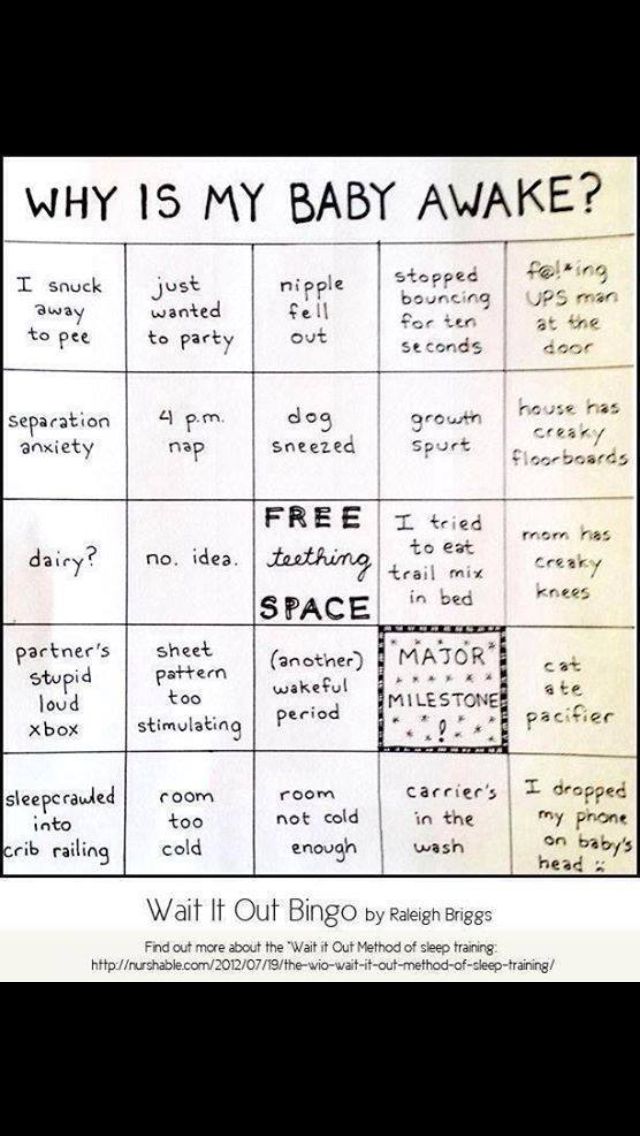Pelvic floors in pregnancy
What you should know about your pelvic floor: pre-pregnancy, during pregnancy and after giving birth
Squeezes, Kegels, zip-ups – whatever you call them, pelvic floor exercises are important for women at all stages of life.
Pregnancy and birth (both vaginal and caesarean) can put stress on and damage the pelvic floor. So, if you are planning to have a baby, you’re pregnant or you’ve had a baby (or a few), now is an especially important time to pay attention to those muscles downtown.
We spoke with Women’s Health Physiotherapist Marian Donnelly and the pelvic floor team from the RBWH Women’s Health Physiotherapy Department about what you should be paying attention to when you think pelvic floor.
What is my pelvic floor?
Your pelvic floor is the band of muscles that stretches across the bottom of your abdomen, from your tailbone to your pubic bone. These muscles support your pelvic organs, which include your uterus, bladder and bowel. Think of your pelvic floor like a hammock on which these organs rest. The pelvic floor muscles also help stabilise your spine.
Your pelvic floor includes your sphincters, which are the muscles that surround your urethra and anus. These are the muscles that you use to stop yourself from peeing, pooing or passing wind when you don’t want to, including when you do things like exercise or sneeze. Your vaginal muscles are an important part of your pelvic floor too. These muscles are used during sex and giving birth vaginally.
Marian says there are signs women can look out for that might indicate an issue with their pelvic floor.
“Leakage of urine and vaginal heaviness are two obvious signs of pelvic floor problems. Less obvious signs could be pelvic girdle pain, lower back pain, constipation and pain during intercourse.”
Why should I exercise my pelvic floor?
The benefits of a healthy pelvic floor are numerous. Exercising these muscles before falling pregnant and during pregnancy can decrease the damage done to the muscles by the strain of carrying a growing baby, decrease the risk of injury during a vaginal birth and speed up recovery afterwards.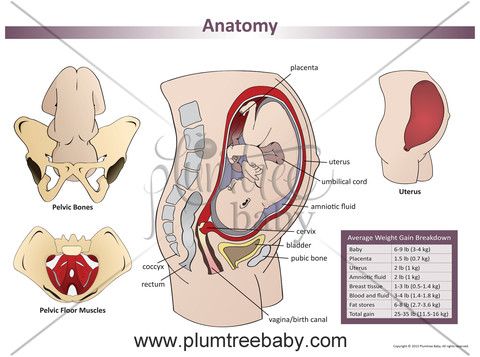 A strong pelvic floor can also make sex more enjoyable.
A strong pelvic floor can also make sex more enjoyable.
And if you don’t pay your pelvic floor some attention?
Marian says, “A weak or damaged pelvic floor can lead to urinary and faecal incontinence, urgency and frequency, as well as pelvic organ prolapse (which happens when the pelvic organs bulge into the walls of the vagina). A weak pelvic floor can also contribute to pelvic girdle pain and lower back pain.”
Marian adds, “After having a child, many women also wish to return to sports and recreational activities that require good pelvic floor strength.”
So, if you’re planning to hit the gym or run around the backyard with the kids, or if you’re prone to the occasional sneeze, pelvic floor strength is going to be your friend.
What happens to the pelvic floor during pregnancy and birth?
Marian explains that as your baby and belly are growing, your pelvic floor is changing, too.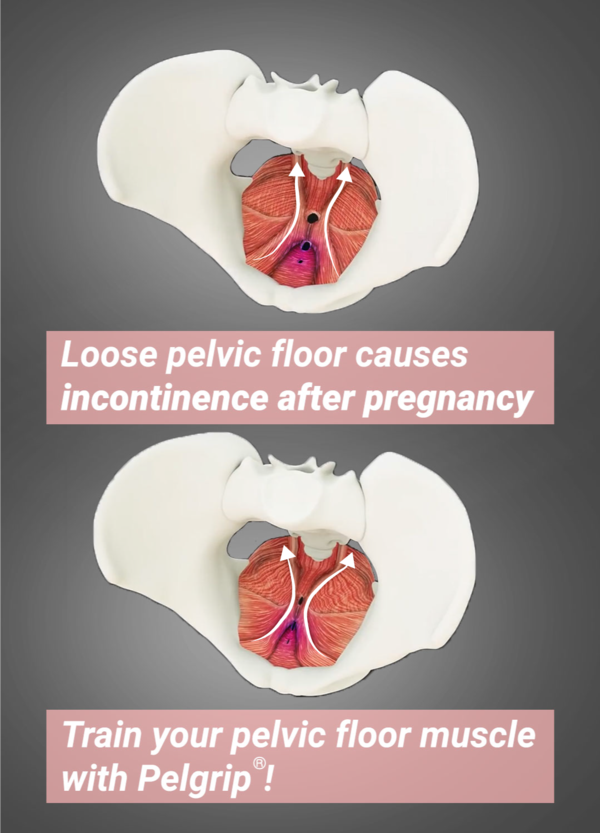
“Pelvic floor muscles work harder than normal during pregnancy: they are required to support the weight of the growing baby. They are also softened by the effects of pregnancy hormones.”
Whether your give birth vaginally or by caesarean, you’re pelvic floor muscles will be impacted.
“During a vaginal birth, the pelvic floor muscles undergo considerable stretching and strain. During a caesarean, surgery through multiple muscle layers can lead to a slower recovery generally and a weakened abdominal wall.”
While pregnant, women can still exercise their pelvic floor, but might need to change their routine. Marian recommends talking to a physiotherapist about your pelvic floor during pregnancy.
“During pregnancy, pelvic floor exercises become more difficult. A pelvic floor physiotherapist can modify an individual program of safe pelvic floor exercises as the pregnancy progresses.”
The pelvic floor after giving birth
Things change again after giving birth, and it can be a good idea to talk to an expert about what you should be doing to help your pelvic floor recover and regain strength.
Marian says, “Pelvic floor exercises done post birth are very different from those done before the birth. The state of the perineum and the length of the second stage of labour are just two of many factors a physiotherapist considers when prescribing an individual pelvic floor exercise program after a woman has given birth.
In the first six weeks the pelvic floor focus is on recovery. Research indicates the benefit of strengthening from 6 weeks, especially if there has been any perineal trauma.”
I’m not pregnant yet, should I start pelvic floor exercises now?
Yes – when it comes to strengthening your pelvic floor it’s a case of the earlier, the better.
Marian says, “The earlier you start your pelvic floor exercises, if taught correctly, the better the likelihood of success with pelvic floor strength.
Research shows that correct training in pelvic floor technique is essential, as many women completing pelvic floor exercises under group direction are not doing their pelvic floor exercises correctly.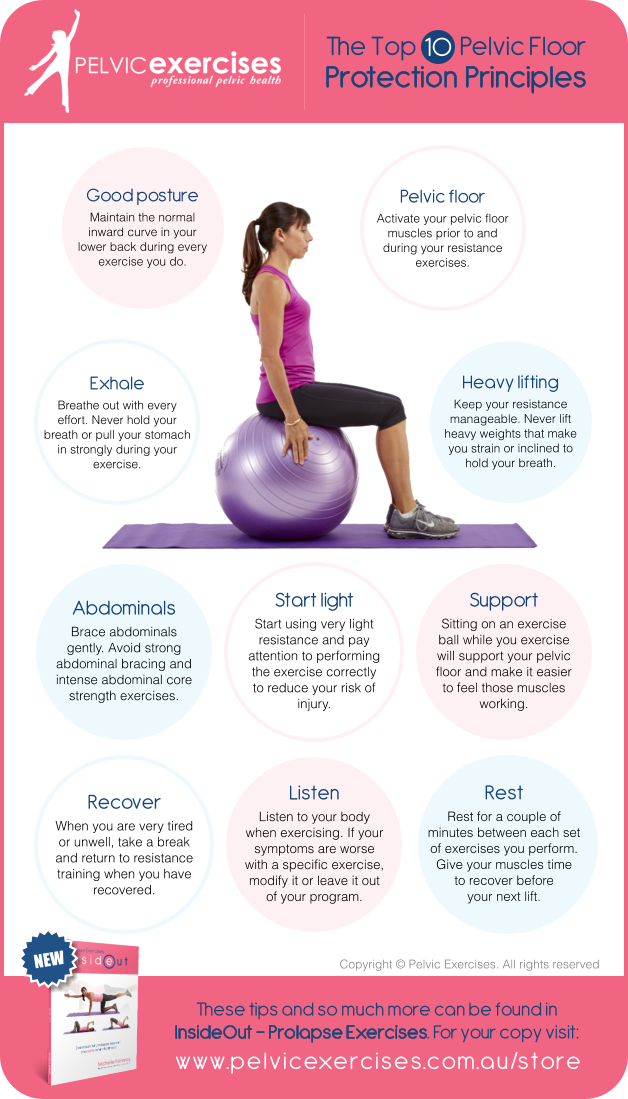 ”
”
How to exercise your pelvic floor properly
Just like you might hire a PT to show you how to use gym equipment properly, you can work with your GP or ask for a referral to see a pelvic floor physiotherapist to learn how to exercise your pelvic floor in the right way.
Continence Australia has a general guide to pelvic floor exercises for all women on their website. Keep in mind that as your body changes during pregnancy and as you get older, or if you don’t know if you’re doing the exercises correctly, a pelvic floor physiotherapist will be able to help you work on a program suited to your individual needs.
During pregnancy, download the Pregnancy Pelvic Floor Plan app for tips on looking after your pelvic floor during pregnancy and reminders on when to do your pelvic floor exercises.
Getting it right
It turns out many women aren’t doing their pelvic floor exercises in the right way, and unfortunately, this can do more harm than good.
Marian says some of the common mistakes women make when exercising their pelvic floor include holding their breath and using accessory muscles incorrectly while doing the exercises.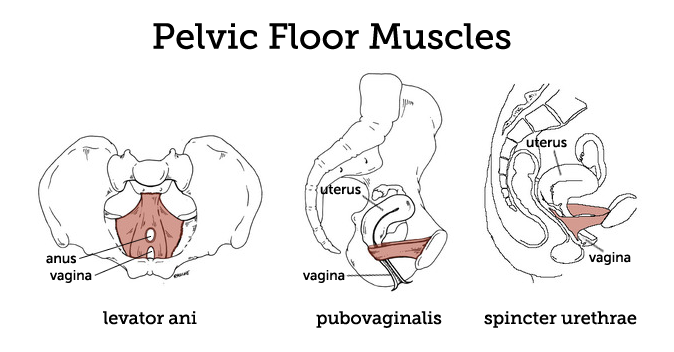 Some women also find that they ‘bear down’ with the muscles instead of ‘pulling up’.
Some women also find that they ‘bear down’ with the muscles instead of ‘pulling up’.
Marian also discourages women from overdoing it after they’ve had a baby.
“Don’t join boot camp before your pelvic floor has fully recovered!
Many women assume that once the baby is born they can return to full pre-pregnancy exercise. This is not the case, as hormonal changes continue in the long-term and are related to how long a women breast feeds and when periods return.
There is also a time lag beyond pregnancy for return to pre-pregnancy hormone levels. These hormones serve to soften the support structures in the pelvic floor.”
I’m busy. Do I really,
really have to?Women have a lot on their plate, and kids only make the schedule busier. Is it really that important to work your pelvic floor?
Marian says, “Yes! In most cases, pelvic floor exercises usually take less than five minutes and can be completed sitting down, at the traffic lights, watching TV or eating dinner – mums can multitask while doing their pelvic floor exercises!”
Your pelvic floor is going to play a role in your overall health for the rest of your life. It’s never too early or late to learn about and strengthen your pelvic floor.
It’s never too early or late to learn about and strengthen your pelvic floor.
Pelvic floor exercises | Pregnancy Birth and Baby
Pelvic floor exercises | Pregnancy Birth and Baby beginning of content6-minute read
Listen
What is the pelvic floor?
Your pelvic floor is a group of muscles which support your bladder, uterus and bowel. These muscles form a ‘sling’ which attaches to your pubic bone at the front and your tailbone at the back. Your urethra, vagina and anus pass through the pelvic floor. A strong pelvic floor helps you to maintain good bladder and bowel control. Your pelvic floor is also important for good sexual function.
The pelvic floor has an extra job during pregnancy — to support your growing baby. During labour and birth, your pelvic floor muscles need to relax and stretch to allow your baby to be born.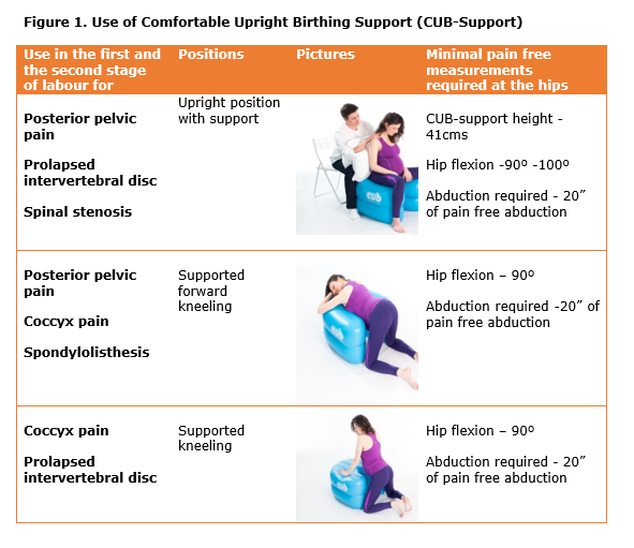
Why should I do pelvic floor exercises?
Pelvic floor exercises are important at all stages of life to prevent bladder and bowel problems, such as incontinence and prolapse, and improve sexual function.
In pregnancy, hormonal changes cause your muscles to soften and stretch more easily. These changes, along with the weight of your growing baby, put extra strain on the pelvic floor. This can increase the chance of suffering from bladder or bowel problems during pregnancy and after birth.
Around 1 out of 3 women develop some form of incontinence after having a baby, but with pelvic floor training during and after pregnancy, your pelvic floor is more likely to return to normal after birth. Women with a strong pelvic floor are also less likely to have bladder or bowel problems both during and after pregnancy.
How do I do pelvic floor exercises?
The first step is to find out how to activate your pelvic floor muscles. Sit or lie down with your thighs, buttocks and stomach muscles relaxed, and squeeze the muscles around your anus (back passage) as if you are trying to stop passing wind.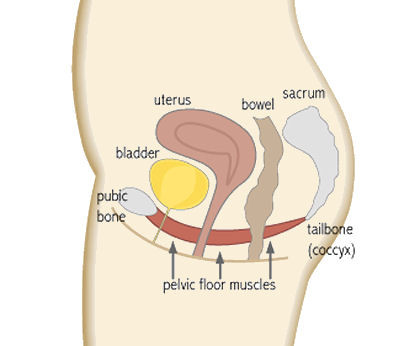 Squeeze and relax these muscles a few times to get used to the sensation. Make sure your buttocks remain relaxed and that you are breathing normally.
Squeeze and relax these muscles a few times to get used to the sensation. Make sure your buttocks remain relaxed and that you are breathing normally.
You can also try to stop the stream of urine when you are on the toilet emptying your bladder. This can help you learn how to squeeze and relax your pelvic floor, but it’s important not to stop and start your urine stream too often (no more than once a week), as this can make it difficult to empty your bladder properly.
Some women find it difficult to feel or voluntarily squeeze their pelvic floor muscles. If you are struggling, ask for advice from a physiotherapist or continence nurse.
Use the service finder tool to help you find a physiotherapist or continence nurse near you.
How to perform pelvic floor exercises
- Squeeze your pelvic floor muscles. You should feel the muscles around your anus and vagina lifting up inside.
- Hold them as tightly as you can while counting to 8, or as long as you can.
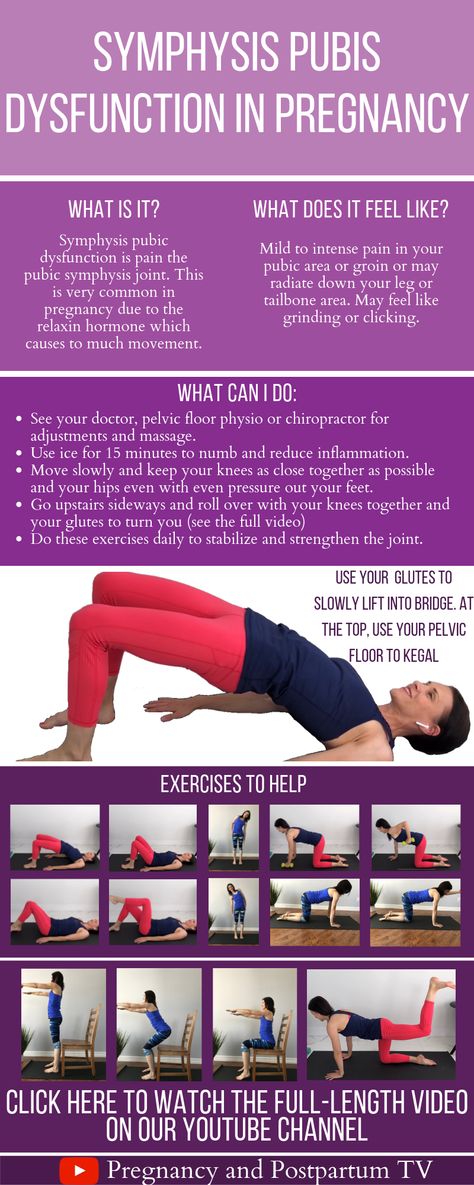
- Relax your muscles. You should feel them let go and relax, and rest for around 8 seconds.
- Repeat the exercise as many times as you can.
- Make sure your thighs and buttocks stay relaxed while you do the exercises, and that you aren’t holding your breath.
Aim to do 3 sets of 8 to 12 squeezes every day. You can try to do sets in different positions including lying down, sitting or standing
Watch this video from the Continence Foundation of Australia for a step-by-step guide:
When is the best time to do pelvic floor exercises?
You can do pelvic floor exercises any time of the day. You can do them anywhere, and in any position.
Aim to do pelvic floor exercises every day. It can be helpful to link them with a regular activity, such as waiting for the kettle to boil, standing in a queue or sitting at a red traffic light — any time when you are relaxed and can focus on strengthening your pelvic floor.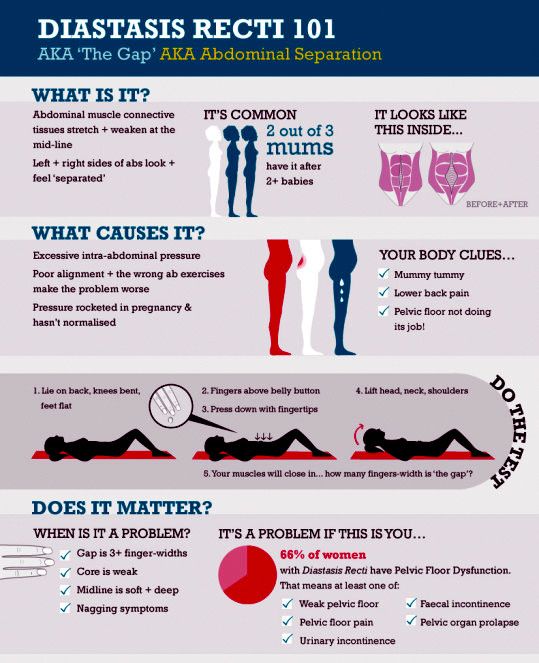
Remember to actively squeeze your pelvic floor when you cough, sneeze or lift heavy objects. This will help you to strengthen your pelvic floor and to reduce the chance of urine leaks (stress incontinence).
Will my pelvic floor muscles get stronger after my baby is born?
Your body needs time to recover after birthing your baby. This includes your pelvic floor and the other muscles and nerves in your pelvic area, which may have been stretched during your baby’s birth. Women who birth a large baby (over 4kg), push for a long time or have an assisted birth may need more time to recover.
Weak pelvic floor muscles, or problems with bladder or bowel control, may get better in the first 6 months after birth even without help. Regular pelvic floor muscle training, along with the right advice if needed, can help you recover faster.
Most women can start gentle pelvic floor exercises within 24 hours after birth, even if they have stitches after an episiotomy or swelling. Pelvic floor exercises can even improve circulation in the area and help you to heal faster.
Pelvic floor exercises can even improve circulation in the area and help you to heal faster.
If you are still struggling with bladder or bowel problems 6 months after birthing your baby, it’s a good idea to visit your doctor or physiotherapist for an assessment.
Your doctor can give you advice and information about pelvic floor exercises and any medical problems, such as incontinence, which might be caused by a weak pelvic floor.
Your doctor may also refer you to a physiotherapist or continence nurse who can give you further advice.
Visit the Continence Foundation of Australia website for more information and resources. You can also contact the National Continence Helpline for information and advice.
You can find out more about pelvic floor strength on the Jean Hailes website.
Sources:
Royal Women's Hospital (The pelvic floor), Continence Foundation of Australia (Pelvic floor muscles), Australian Government - Department of Health (Pelvic floor muscle training 2016), Continence Foundation of Australia (Expecting a baby 2020), Government of Western Australia (Physiotherapy after childbirth 2017), Continence Foundation of Australia (Pelvic Floor Health for Expectant and New Mums 2022), Continence Foundation of Australia (Pelvic floor muscle training for women 2020)Learn more here about the development and quality assurance of healthdirect content.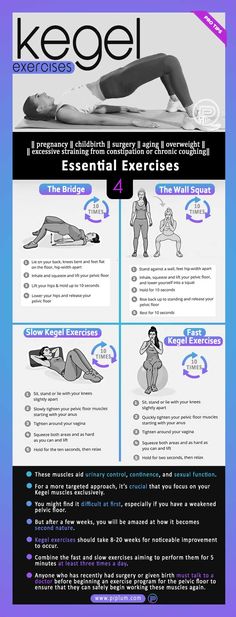
Last reviewed: April 2022
Back To Top
Related pages
- Exercising during pregnancy
- Birth injury (to the mother)
- Looking after your body after having a baby
- Preparing for the birth
Need more information?
Pelvic floor exercises & care: in pictures | Raising Children Network
Your pelvic floor holds your bladder, bowel and uterus in place, but pregnancy and birth can weaken it. Do pelvic floor exercises: squeeze, lift and hold.
Read more on raisingchildren.net.au website
Pelvic floor - Better Health Channel
Pelvic floor exercises are designed to improve muscle tone and prevent the need for corrective surgery.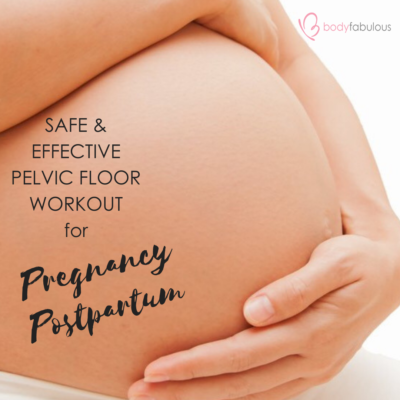
Read more on Better Health Channel website
Pelvic Floor exercises
Strong, well activated pelvic floor muscles help support the bladder, uterus and bowel and allow the muscles around the urethra to function properly.
Read more on Queensland Health website
Female Pelvic Floor Muscles | Exercises | Continence Foundation of Australia
Pelvic floor muscles help women control their bladder, bowel & uterus. All women can benefit from pelvic floor exercises, learn how to do them correctly.
Read more on Continence Foundation of Australia website
Anatomy of pregnancy and birth - perineum and pelvic floor
The perineum – the skin between the vagina and anus - stretches during childbirth and can sometimes tear.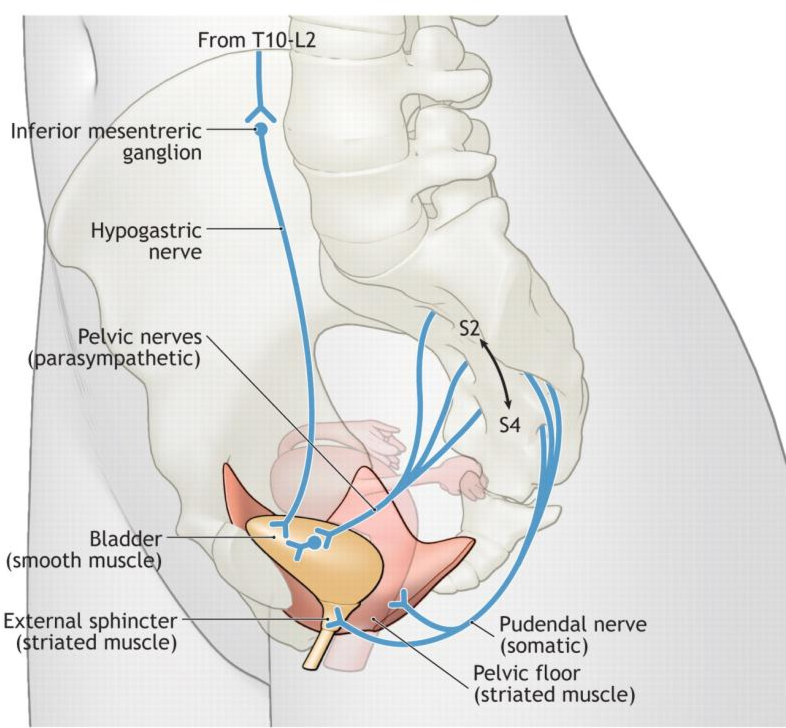 Learn here how to prepare the perineum for the birth.
Learn here how to prepare the perineum for the birth.
Read more on Pregnancy, Birth & Baby website
Bladder weakness after birth
Leaking urine after childbirth is very common. It can be embarrassing and inconvenient, but there are ways to improve bladder weakness.
Read more on Pregnancy, Birth & Baby website
Pelvic floor friendly cardio exercises · Pelvic floor friendly exercises · Pelvic Floor First
There are a range of cardio exercises that are pelvic floor safe
Read more on Continence Foundation of Australia website
The pelvic floor and core exercises · Pelvic floor friendly exercises · Pelvic Floor First
The pelvic floor muscles form the base of the group of muscles commonly called the ‘core’.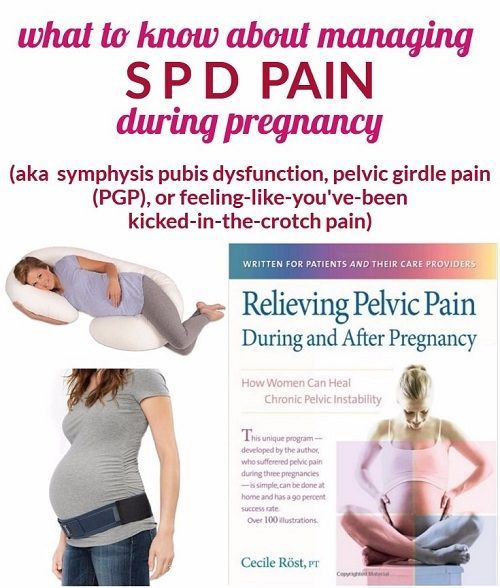
Read more on Continence Foundation of Australia website
Women · Working your pelvic floor · Pelvic Floor First
Pelvic floor muscle exercises for women
Read more on Continence Foundation of Australia website
Safe return to exercise after pregnancy
Exercise can help you recover after childbirth, make you stronger and improve mood. Here are some tips on how to exercise safely after a pregnancy.
Read more on Pregnancy, Birth & Baby website
Disclaimer
Pregnancy, Birth and Baby is not responsible for the content and advertising on the external website you are now entering.
Need further advice or guidance from our maternal child health nurses?
1800 882 436
Video call
- Contact us
- About us
- A-Z topics
- Symptom Checker
- Service Finder
- Linking to us
- Information partners
- Terms of use
- Privacy
Pregnancy, Birth and Baby is funded by the Australian Government and operated by Healthdirect Australia.
Pregnancy, Birth and Baby is provided on behalf of the Department of Health
Pregnancy, Birth and Baby’s information and advice are developed and managed within a rigorous clinical governance framework. This website is certified by the Health On The Net (HON) foundation, the standard for trustworthy health information.
This site is protected by reCAPTCHA and the Google Privacy Policy and Terms of Service apply.
This information is for your general information and use only and is not intended to be used as medical advice and should not be used to diagnose, treat, cure or prevent any medical condition, nor should it be used for therapeutic purposes.
The information is not a substitute for independent professional advice and should not be used as an alternative to professional health care. If you have a particular medical problem, please consult a healthcare professional.
Except as permitted under the Copyright Act 1968, this publication or any part of it may not be reproduced, altered, adapted, stored and/or distributed in any form or by any means without the prior written permission of Healthdirect Australia.
Support this browser is being discontinued for Pregnancy, Birth and Baby
Support for this browser is being discontinued for this site
- Internet Explorer 11 and lower
We currently support Microsoft Edge, Chrome, Firefox and Safari.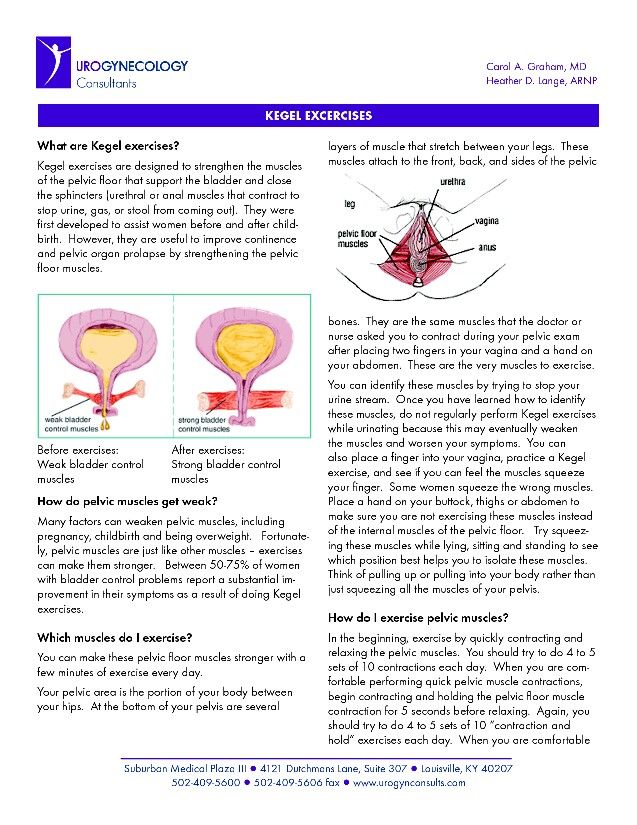 For more information, please visit the links below:
For more information, please visit the links below:
- Chrome by Google
- Firefox by Mozilla
- Microsoft Edge
- Safari by Apple
You are welcome to continue browsing this site with this browser. Some features, tools or interaction may not work correctly.
how to do it right, benefits, effectiveness, contraindications
The author of the technique to help strengthen the muscles of the pelvic floor is Arnold Kegel, a professor of gynecology and sexologist from the USA. Kegel exercises for women during pregnancy will help you learn how to control intimate muscles (useful during labor) and help reduce the risk of tears in the perineum. The muscles of the pelvic floor during pregnancy lose their elasticity due to the constant pressure on them from the enlarged uterus. Simple, but at the same time effective muscle training will help restore their elasticity and tone. nine0003
The main thing is to correctly identify the right muscles and remember how to do the exercises. Finding muscles is not difficult - during the next visit to the toilet, you need to abruptly stop urination, and then alternately squeeze and relax the muscles found in this way several times, not including the muscles of the press, buttocks, legs in the process. If it works, you can start charging.
Finding muscles is not difficult - during the next visit to the toilet, you need to abruptly stop urination, and then alternately squeeze and relax the muscles found in this way several times, not including the muscles of the press, buttocks, legs in the process. If it works, you can start charging.
Benefits and harms of intimate gymnastics
Regularly performing each Kegel exercise for women before childbirth, you can get the following results in a month: nine0003
- flabby pelvic muscles become toned;
- general well-being improves;
- will manage to control the muscles during childbirth;
- reduces the level of pain during natural childbirth;
- reduces the risk of complications, ruptures.
The advantage of this workout is that you can do it anytime, anywhere - at home, at work or on public transport. Gymnastics does not require special training and has no age restrictions, but there are still some contraindications that those who are expecting a baby should be aware of.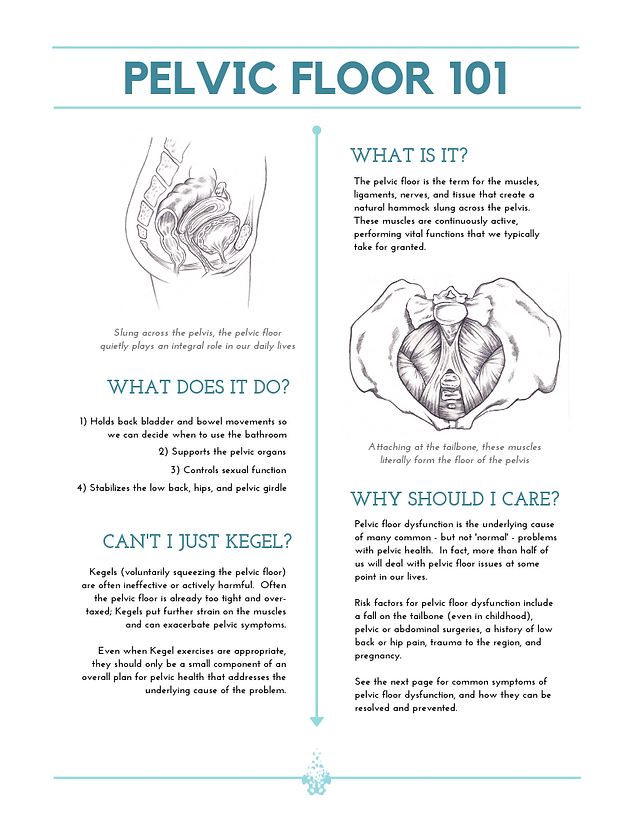 Below we will describe how to perform the Kegel exercise for pregnant women correctly so as not to harm yourself or your unborn baby. nine0003
Below we will describe how to perform the Kegel exercise for pregnant women correctly so as not to harm yourself or your unborn baby. nine0003
Contraindications
Before a pregnant woman incorporates any additional physical activity into her daily routine, it is recommended to consult a gynecologist. The doctor will assess the condition of the mother and fetus and tell you if it is possible to train. There are restrictions under which Kegel gymnastics is completely excluded or adjusted according to the exercises so as not to harm yourself and the fetus, but to strengthen the muscles. Limitations are the threat of premature birth and miscarriage. nine0003
After the 16th week of pregnancy, gymnastics should not be performed in the supine position in order to eliminate pressure on the inferior vena cava.
In addition to the threat of premature birth and miscarriage, Kegel exercises for women during pregnancy are prohibited with severe toxicosis, uterine bleeding, and diseases accompanied by a feverish state. It is advisable to discuss all innovations in the daily routine and diet in advance with your doctor. He is responsible for the condition of the mother and child, has sufficient experience and knowledge to make informed decisions. nine0003
It is advisable to discuss all innovations in the daily routine and diet in advance with your doctor. He is responsible for the condition of the mother and child, has sufficient experience and knowledge to make informed decisions. nine0003
The doctor will determine which Kegel exercises are acceptable and which ones should be avoided. Even in the case of a calm pregnancy without any pathologies, you should not practice in a lying position, only sitting or standing.
Powerful 4-piece set
It is convenient to study yoga classes from a video, but this will not work with Kegel gymnastics - you will have to carefully read the description of the exercise and perform it as accurately as possible. In addition to the starting position of standing and sitting, pelvic exercises during pregnancy can be performed on all fours. You need to start with 3-5 repetitions, eventually bringing the number of repetitions of each element to 20-30. nine0003
Among the large number of exercise options for pregnant women, 4 main elements are suitable:
- Sit comfortably.
 Bend your legs and slightly spread apart. Tighten the muscles of the perineum for 5-10 seconds, relax. Repeat 3-5 times.
Bend your legs and slightly spread apart. Tighten the muscles of the perineum for 5-10 seconds, relax. Repeat 3-5 times. - Imagine the vagina as an elevator shaft, where the entrance is the lower floor, the cervix is the upper one. The task is to smoothly contract the muscles from the bottom up, lingering for 2-3 seconds on each imaginary floor. “Having risen to the last floor”, you gradually need to “go down”, relaxing the muscles in turn on each “floor”. At first, performing such a pelvic floor exercise for pregnant women will seem difficult, but with each workout it will become easier. nine0012
- In addition to the vaginal muscles, the muscles of the anus are involved. The exercise is performed at a fast pace. Squeeze the vagina, then the anus, then relax the muscles in reverse order.
- Attention! Before performing the Kegel exercise for pregnant women, you need to empty your bladder and intestines. Take a comfortable posture. Hold your breath, gently and smoothly push, as during a bowel movement, but not with the anus, but with the vagina.
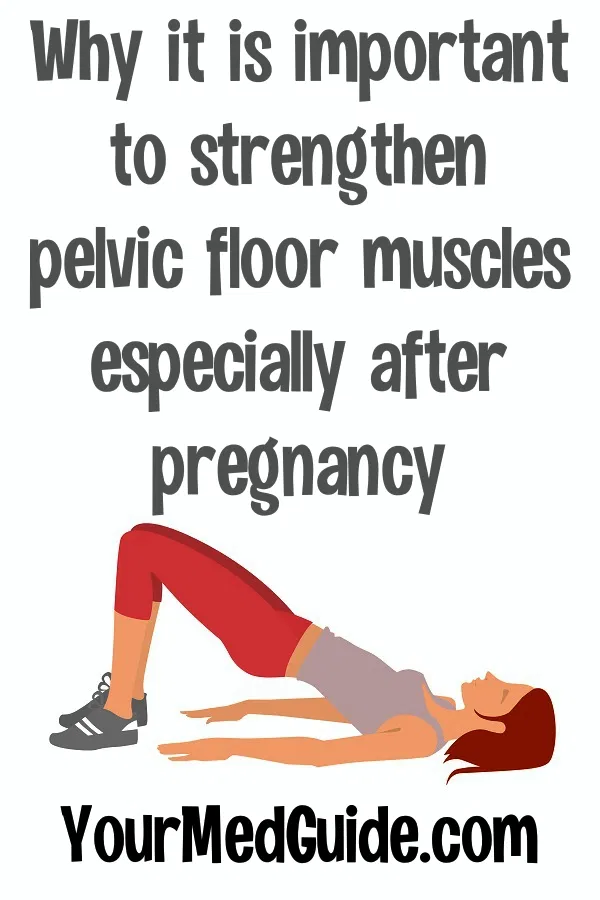 To assess the correctness of the exercise, put your hand on the perineum. If you feel the pressure of the muscles of the vagina, then everything is correct. After relaxing, repeat the task. The exercise will teach you to control the muscles that are needed for effective attempts during labor. nine0012
To assess the correctness of the exercise, put your hand on the perineum. If you feel the pressure of the muscles of the vagina, then everything is correct. After relaxing, repeat the task. The exercise will teach you to control the muscles that are needed for effective attempts during labor. nine0012
The right approach: what are the nuances to consider
If you are going to perform Kegel exercises during the 1st, 2nd and 3rd trimesters, you must adhere to the following recommendations:
- take a comfortable position, so that nothing presses or causes pain;
- breathe calmly and measuredly;
- strain only the necessary muscles so as not to harm the child and yourself;
- do not be zealous, unnecessary fatigue is useless; nine0012
- practice daily;
- If you experience discomfort, stop exercising and consult a doctor.
It is advisable to start gymnastics early, performing 20-30 contractions every day.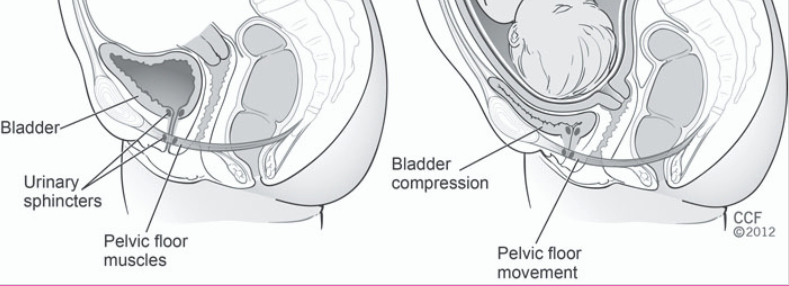 The goal of training is to feel and control the work of the muscles. It may be difficult at first, but over time, the muscles will be easy to control. The load should be increased gradually.
The goal of training is to feel and control the work of the muscles. It may be difficult at first, but over time, the muscles will be easy to control. The load should be increased gradually.
Kegel exercises are useful not only for strengthening the muscles of the vagina, they help control the anal muscles, tone the muscles of the small pelvis. The main condition for success is to regularly perform the training complex, and then the result from daily exercises will be felt after a couple of weeks. nine0003
Kegel exercises, like other exercises, help strengthen muscles. The muscles that are strengthened with Kegel exercises are located in the lower part of the pelvic region and are responsible for the correct positioning of the pelvic organs and also regulate urination. And this is very important for pregnant women. Due to the increase in the size of the uterus and the weight of the growing baby, this area of the body is under a lot of pressure, which can sometimes lead to urinary incontinence and other problems.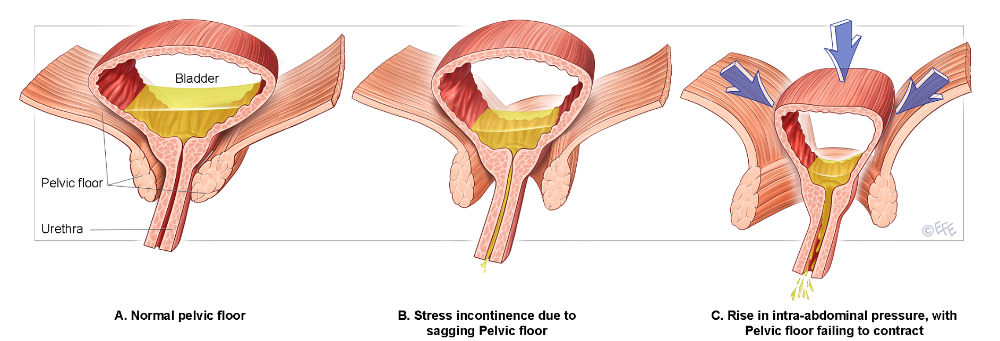 To do Kegel exercises, you need to find the right muscles, and then train them. nine0003
To do Kegel exercises, you need to find the right muscles, and then train them. nine0003
Method 1 of 3: Identifying the “right” muscles
1. Try to contract your pelvic floor muscles while urinating. If you squeeze the right muscles, it will stop urination. If you succeeded, you have identified the muscles that need to be activated by doing Kegel exercises.
2. Try to hold back gases. The muscles that are used to expel gas are the muscles you are trying to identify. If you can tense these muscles to keep from gassing, you've found the right muscles. nine0003
3. Try to find these muscles with your fingers. If you're not sure you're squeezing the right muscles, try finding them with your fingers. For this:
Wash your hands and put your finger in your vagina. If you feel pressure around him as you try to squeeze your pelvic muscles, you are squeezing the right muscles.
4.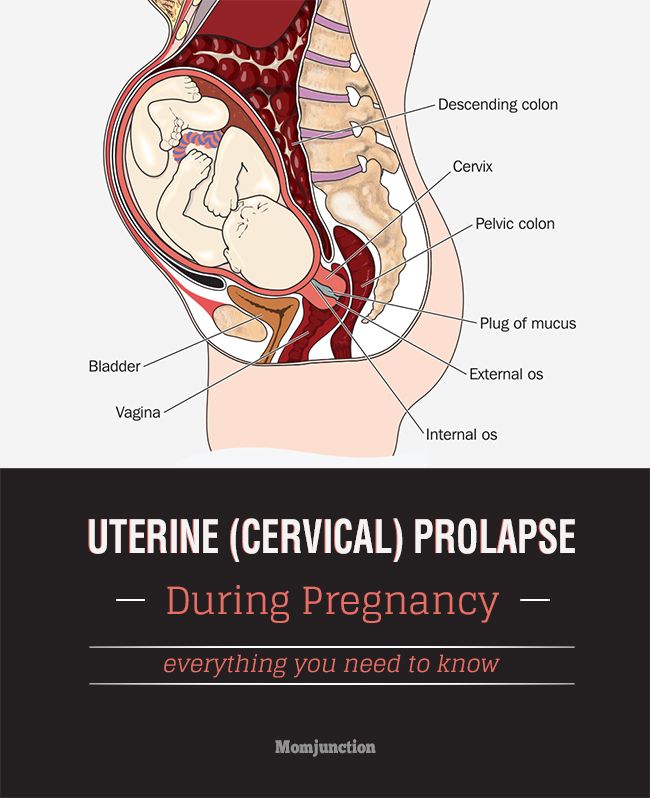 Identify these muscles while making love. Try to tighten these muscles when you have sex with your partner. Ask him if he felt pressure around his penis when you tightened the muscles. nine0003
Identify these muscles while making love. Try to tighten these muscles when you have sex with your partner. Ask him if he felt pressure around his penis when you tightened the muscles. nine0003
If he feels it, you are squeezing the right muscles.
5. Check with your doctor. If you're not sure which muscles you should be training, don't hesitate to contact your doctor to see if you're doing everything right.
Your doctor may also give you some advice regarding these exercises.
Method 2 of 3: Kegel Exercises nine0003
1. Empty your bladder before you start exercising. While you may have identified your pelvic floor muscles while urinating, it's not a good idea to practice Kegel exercises while urinating. This is because holding on to urine can lead to unnecessary infections. To avoid infections, always empty your bladder before exercising.
2. Take a comfortable position. Kegel exercises are so easy that you can do them in any position and even during pregnancy. In addition, no one will know that you are doing the exercises. Find the position that suits you best. nine0003
Kegel exercises are so easy that you can do them in any position and even during pregnancy. In addition, no one will know that you are doing the exercises. Find the position that suits you best. nine0003
Lie down, sit down or stand up. The only thing you should keep in mind is that you should not put pressure on your stomach while doing these exercises.
3. Contract your pelvic floor muscles and hold for three to four seconds. Then relax your muscles. Let them rest for a few seconds, then squeeze them again. It's a good idea to start with three or four seconds.
When it is not so difficult for you to do this exercise, you can increase the time to five seconds. nine0081 Repeat this procedure 10 times.
4. Do Kegel exercises three times a day. As mentioned earlier, you can do them anytime, like when you're watching your favorite TV show or standing in line at the grocery store.
Doing these exercises 50 times a day is usually enough to strengthen your pelvic floor muscles. [1]
[1]
5. Try not to pull in your stomach. If you pull in your abdominal muscles while doing Kegel exercises, you won't get the same results when you just squeeze your pelvic floor muscles. To make sure you don't pull in your abdominal muscles: nine0003
Place your hand on your stomach and tighten your pelvic floor muscles. If your stomach is shrinking, you need to pay more attention to holding it when you do these exercises.
6. Don't move your feet. Kegel exercises do not require you to move and tense your leg muscles. If you are doing this, you are not doing the exercise correctly and you should consult someone, such as a doctor, who can help you identify the muscles that are involved in Kegel exercises. nine0003
7. Try not to hold your breath. Kegel exercises are not meant to be strenuous and you should not hold your breath during the exercises. If you have trouble breathing when you do these exercises, or if you can't help but hold your breath, talk to your doctor to help you do the exercises correctly.
8. Do these exercises throughout your pregnancy. This will help you hold on to urine even if your child is pressing on the bladder. In addition to this, strong pelvic floor muscles will help you during childbirth. They can help: nine0003
- Push during childbirth.
- Avoid tissue rupture during childbirth.
Method 3 of 3: Understanding Kegel Exercises
1. Learn about the benefits of Kegel exercises. As your baby begins to grow in your uterus, your enlarged uterus may press on your bladder, making it difficult for you to control your urination. Kegel exercises can help you control your urination. They can also help: nine0003
Prevent fecal incontinence.
Make you stronger in childbirth.
Increase blood circulation, which can help prevent hemorrhoids, which happen quite often during pregnancy.
Accelerate the recovery process after pregnancy.
2.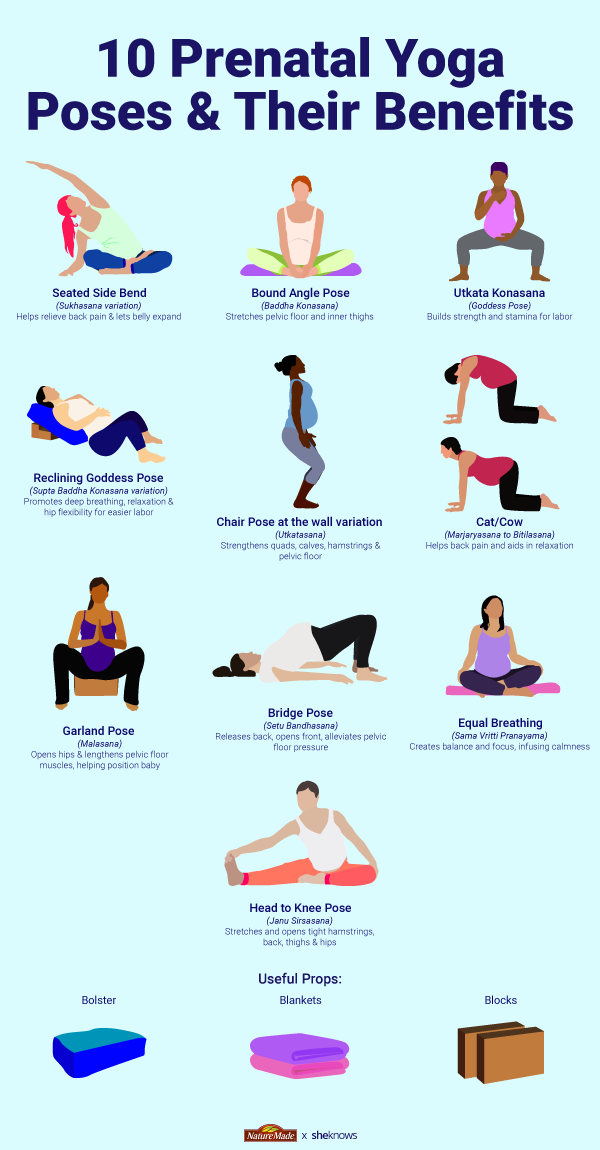 Find out when is the best time to start doing these exercises. It is generally recommended that women start doing Kegel exercises in the first trimester of pregnancy. This gives a woman more time to strengthen her pelvic floor muscles before they are put under pressure by the baby's weight and other factors that come along at the end of pregnancy. Starting to train your muscles early gives you enough time to perfect your exercises to the point where they become natural, something you don't even have to think about when you're under the emotional and physical stress of late pregnancy. nine0003
Find out when is the best time to start doing these exercises. It is generally recommended that women start doing Kegel exercises in the first trimester of pregnancy. This gives a woman more time to strengthen her pelvic floor muscles before they are put under pressure by the baby's weight and other factors that come along at the end of pregnancy. Starting to train your muscles early gives you enough time to perfect your exercises to the point where they become natural, something you don't even have to think about when you're under the emotional and physical stress of late pregnancy. nine0003
3. Do not stop exercising after pregnancy and childbirth. As soon as you recover from childbirth, you can start doing the exercises again. Keep doing them all your life if you want. If you do these exercises, they will help prevent uncontrolled urination due to sneezing, coughing, laughing, as well as fecal incontinence and hemorrhoids.
TIP
Kegel exercises can significantly improve the quality of sex and prevent organ prolapse through the vaginal canal, which occurs in older women.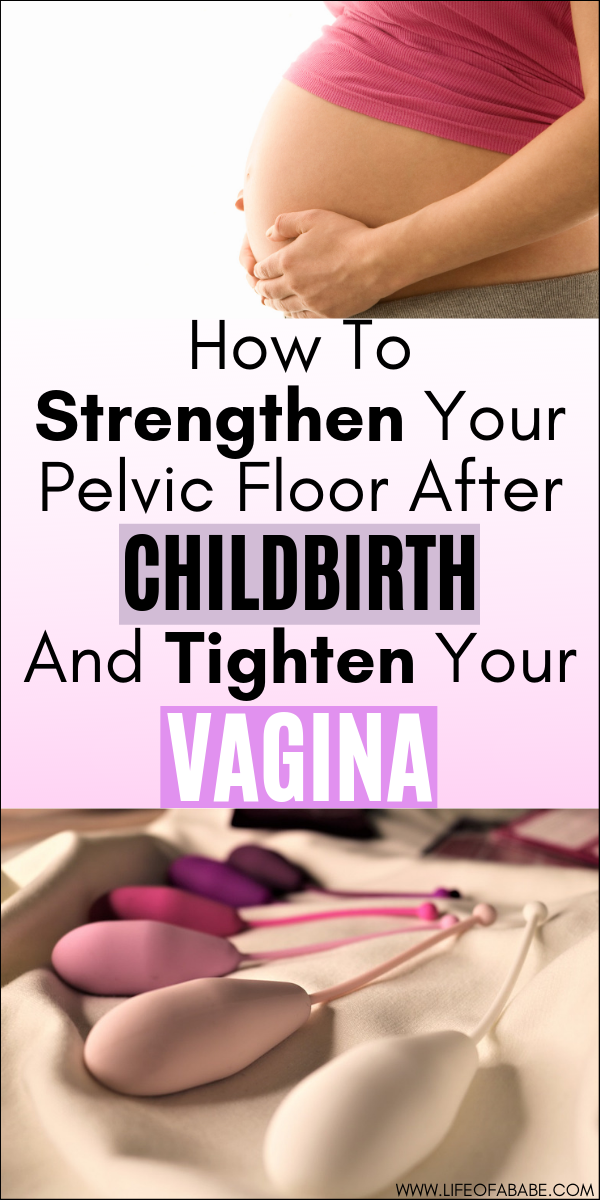 nine0003
nine0003
A source of information
Pelvic floor. Pregnancy and childbirth — Oksana Gaan
Pelvic floor. This part of our body is often underestimated. We see only what is outside: we need to lose weight, we need to pump up the ass or stomach.
And you have to start from within!
The pelvis is the center of our body! And literally, the pelvic floor muscles (PFM) help us keep our whole body in balance. And this is equally important for both men and women!
But for the female body, this area of the body plays a much more important role than for men. Just because in women the pelvis is open from below and in the absence of the correct balance of loads, that is, the non-use of these muscles, they, like any other muscle in the body, simply weaken and lose the tone necessary to hold not only the organs located in the pelvic floor , but also those located above them! nine0003
And of course, by nature, the female body is adapted for childbirth. And therefore, our MTD is a priori more flexible, because made to stretch several times
Hence the frequent prolapse of organs, and other resulting diagnoses, already from the fact that one organ is not where it should be, presses on another, etc.
And this is even if the woman did not give birth! And if you still decide to become a mother, then you simply have to know how important the muscles of the pelvic floor are, which training is suitable for prevention, and which for recovery after childbirth. nine0003
Not only the belly grows
Thanks to the hormone relaxin, during the entire pregnancy, the MTD gradually become softer and more elastic.
At the same time, the weight of the baby, uterus and amniotic fluid increases.
In addition to the muscle tissues themselves, the bone tissue of the pelvic body itself becomes softer.
The pelvis is expanding. How does this happen?
The bones themselves do not get bigger and longer. The expansion of the pelvis occurs through stretching of soft tissues - cartilage structures and ligaments. nine0081 First of all, the ligaments that hold the uterus begin to stretch. In this case, a woman may experience pain already in the early stages of pregnancy.
nine0081 First of all, the ligaments that hold the uterus begin to stretch. In this case, a woman may experience pain already in the early stages of pregnancy.
Starting at approximately 17-20 weeks of gestation, the entire pelvic bone structure begins to expand perceptibly. In this case, a woman may feel pain as if in the joints, but the source of pain is usually connective tissues.
However, the bone structures lose a lot of calcium, which is necessary for the formation of the child's skeleton, and also become softer. Therefore, to support bone structures, it is important for the expectant mother to include in her diet a lot of calcium-containing foods. nine0003
If the bone structures themselves do not “grow”, then the symphysis (the cartilaginous connection of the pelvic bones in the center of the pubis) increases significantly in volume.
It is thanks to the expansion of the distance between the bones of the pelvis in front that the baby's head is able to pass through the pelvis during childbirth.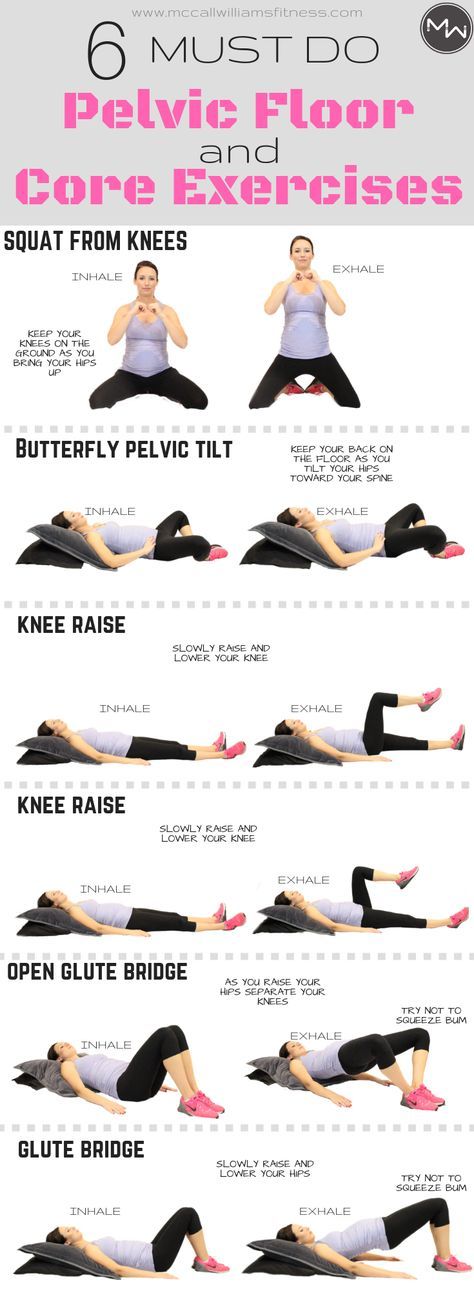 And if the expansion of other connective tissues is not noticeable for all women, then the symphysis, as a rule, causes inconvenience, up to acute pain, to almost all expectant mothers.
And if the expansion of other connective tissues is not noticeable for all women, then the symphysis, as a rule, causes inconvenience, up to acute pain, to almost all expectant mothers.
As the pelvis expands, the osseous structures become displaced and can press on nearby nerves. The position of the anterior pelvic bones can even shift very noticeably - by the end of pregnancy, the width of the symphysis increases significantly - up to 2 cm.
And in the absence of regular mobility during pregnancy, it can cause quite acute pain, and even after childbirth it can even grow together in the wrong position, which entails long-term displacement of all nearby structures and organs. The pain in this case takes on a chronic character, and it is often possible to eliminate displacements some time after childbirth only by surgery.
How does perinatal yoga help?
This is an excellent prevention of such long-term problems with the pelvic region after childbirth
Support for healthy expansion of the pelvis - without pain and complications
When the pelvic bone structures are displaced, a special program helps to set the displaced elements in a comfortable position .










